By "wrong AST" I'll make a semi educated guess that, for input like "foo.bar.baz", you get an AST where foo is the root with bar as a child who in its turn has baz as a child, which is a leaf in the AST. You may want to have this reversed. But I'd not go for such an AST if I were you: I'd keep the AST as flat as possible:
foo
/ | \
/ | \
bar baz ...
That way, evaluating is far easier: you simply look up foo, and then walk from left to right through its children.
A quick demo:
grammar Test;
options {
output=AST;
ASTLabelType=CommonTree;
}
tokens {
BODY;
ACCESS;
CALL;
PARAMS;
}
start
: body EOF -> body
;
body
: expression (',' expression)* -> ^(BODY expression+)
;
expression
: atom
;
atom
: NUMBER
| (IDENT -> IDENT) ( tail -> ^(IDENT tail)
| call tail? -> ^(CALL IDENT call tail?)
)?
;
tail
: (access)+
;
access
: ('.' IDENT -> ^(ACCESS IDENT)) (call -> ^(CALL IDENT call))?
;
call
: '(' (expression (',' expression)*)? ')' -> ^(PARAMS expression*)
;
IDENT : LETTER+;
NUMBER : DIGIT+;
SPACE : (' ' | '\t' | '\r' | '\n') {$channel=HIDDEN;};
fragment LETTER : ('a'..'z' | 'A'..'Z');
fragment DIGIT : '0'..'9';
which can be tested with:
import org.antlr.runtime.*;
import org.antlr.runtime.tree.*;
import org.antlr.stringtemplate.*;
public class Main {
public static void main(String[] args) throws Exception {
String src = "someVariable, somVariable.someMember, functionCall(param).someMember, " +
"foo.bar.baz(bjork).buffalo().xyzzy";
TestLexer lexer = new TestLexer(new ANTLRStringStream(src));
TestParser parser = new TestParser(new CommonTokenStream(lexer));
CommonTree tree = (CommonTree)parser.start().getTree();
DOTTreeGenerator gen = new DOTTreeGenerator();
StringTemplate st = gen.toDOT(tree);
System.out.println(st);
}
}
The output of Main corresponds to the following AST:

EDIT
And since you indicated your ultimate goal is not evaluating the input, but that you rather need to conform the structure of the AST to some 3rd party API, here's a grammar that will create an AST like you indicated in your edited question:
grammar Test;
options {
output=AST;
ASTLabelType=CommonTree;
}
tokens {
BODY;
ACCESS_OP;
CALL;
PARAMS;
LHS;
RHS;
}
start
: body EOF -> body
;
body
: expression (',' expression)* -> ^(BODY expression+)
;
expression
: atom
;
atom
: NUMBER
| (ID -> ID) ( ('(' params ')' -> ^(CALL ID params))
('.' expression -> ^(ACCESS_OP ^(LHS ^(CALL ID params)) ^(RHS expression)))?
| '.' expression -> ^(ACCESS_OP ^(LHS ID) ^(RHS expression))
)?
;
params
: (expression (',' expression)*)? -> ^(PARAMS expression*)
;
ID : LETTER+;
NUMBER : DIGIT+;
SPACE : (' ' | '\t' | '\r' | '\n') {$channel=HIDDEN;};
fragment LETTER : ('a'..'z' | 'A'..'Z');
fragment DIGIT : '0'..'9';
which creates the following AST if you run the Main class:

The atom rule may be a bit daunting, but you can't shorten it much since the left ID needs to be available to most of the alternatives. ANTLRWorks helps in visualizing the alternative paths this rule may take:

which means atom can be any of the 5 following alternatives (with their corresponding AST's):
+----------------------+--------------------------------------------------------+
| alternative | generated AST |
+----------------------+--------------------------------------------------------+
| NUMBER | NUMBER |
| ID | ID |
| ID params | ^(CALL ID params) |
| ID params expression | ^(ACCESS_OP ^(LHS ^(CALL ID params)) ^(RHS expression))|
| ID expression | ^(ACCESS_OP ^(LHS ID) ^(RHS expression) |
+----------------------+--------------------------------------------------------+



